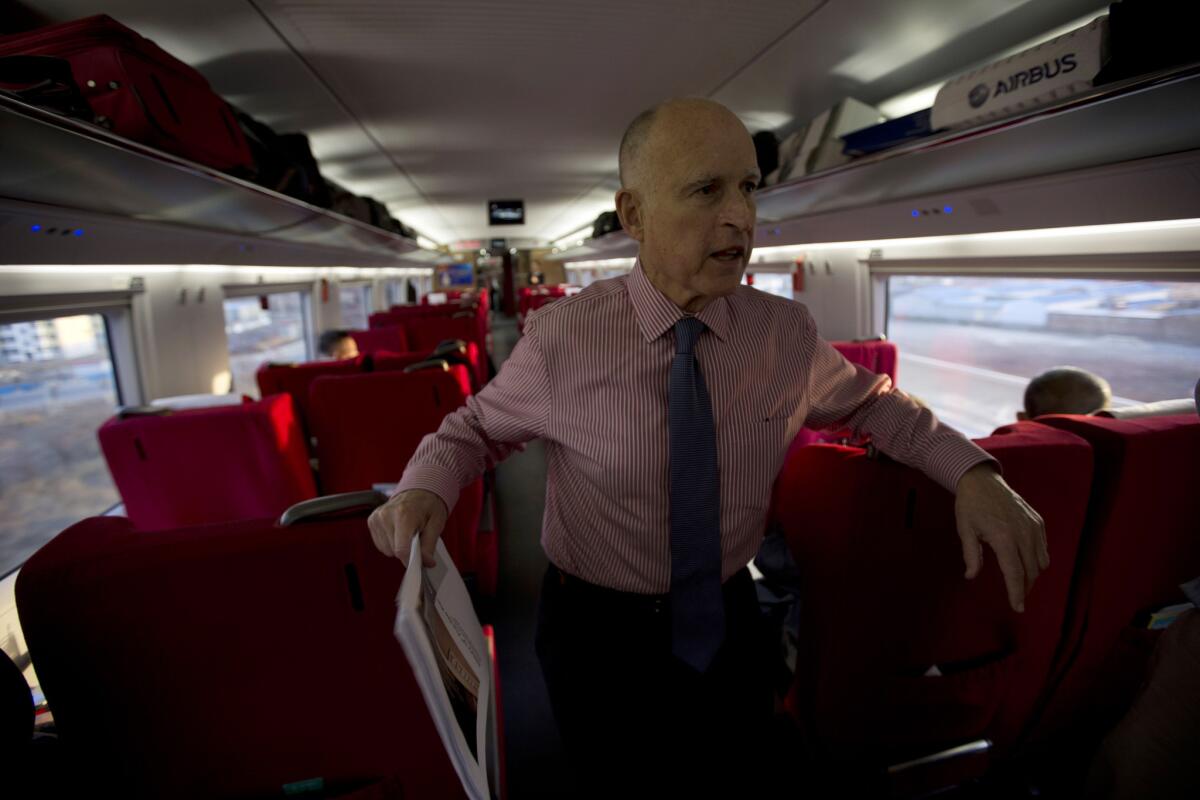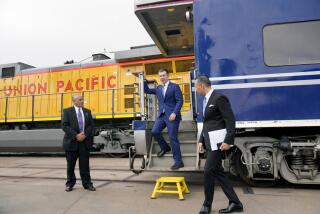Taking California’s bullet train to a greener future

California’s high-speed rail is one of the largest public works projects anywhere in the world. Like the Golden Gate Bridge, Bay Area Rapid Transit, Interstate 5 and the California Aqueduct before it, high-speed rail has engendered opposition, consternation and litigation. Every bold, transformative vision faces that litany.
This year’s state budget includes high-speed rail as an important part of California’s landmark effort to reduce greenhouse gas emissions and fight climate change. Although the Air Resources Board included high-speed rail in its 2008 greenhouse gas reduction plan, the project’s economic benefits have been discussed in more detail than its environmental ones.
Today, California has 32 million registered vehicles, more cars and trucks that travel more miles — more than 330 billion — than any other state. Without high-speed rail, the existing transportation infrastructure cannot reasonably meet the demands of the projected 12 million new Californians coming to this state. The alternative to high-speed rail is an estimated investment of more than $150 billion to build 4,300 new lanes of highway, more freeways and hundreds of new airport gates and runways, covering large swaths of the state with concrete and asphalt. The effect on the environment — water and air quality, open space, food supply, noise and climate — would be substantial.
PHOTOS: Is Gov. Jerry Brown saving California or ruining it?
Although we should preserve our highway system to meet some of this demand, we also need opportunities for travelers to shift from petroleum-based fuels to biofuels, electric vehicles and public transit. This cannot happen unless we modernize and expand California’s rail system — including high-speed rail and regional, urban and commuter rail.
Europe’s experience with high-speed rail is illustrative. After high-speed rail launched in Europe, air trips were cut in half from Paris to London. In Spain, the impact was even more dramatic. For the 315-mile trip from Barcelona to Madrid, more than 60% of air travelers have switched to the 21/2-hour rail ride. Closer to home, Angelenos living near the Metro Expo Line tripled their public transit ridership and reduced daily driving 40% after light rail opened.
High-speed rail has the same potential to change the way people travel in California. By 2040, it could reduce car miles traveled in the state by 3.6 billion miles a year, the equivalent of taking 317,000 cars off the road daily. And by 2020, the project is estimated to eliminate between 278,000 and 674,000 net metric tons of greenhouse gases from voluntary emissions reductions, electrification of local rail and other efforts. High-speed rail will be constructed with net-zero emissions and operate 100% from renewable energy.
This statewide rail system would also give rise to transit and pedestrian-friendly development, which, in turn, preserves Central Valley farmland. The city of Fresno, for example, has approved a land-use plan that directs growth to infill and denser development in the city core, while barring expansion into prime farmland on the city’s outskirts. A key element of this downtown development is the future high-speed rail station and its connection to transit.
California is on track to meet its 2020 emission reduction goals under AB 32, and we need investments in rail modernization to help achieve long-term reductions beyond that date. Reducing car travel, promoting infill and transit-oriented development, preserving farmland and open space, and avoiding massive highway and airport expansions are all part of the high-speed rail project and the vision for California transportation.
The project also serves as a catalyst for $50 million in the governor’s current budget for improvements and upgrades to local rail transit systems in Los Angeles and San Francisco as part of the overall statewide system to improve mobility.
When it was finished in 1869, the transcontinental railroad cut the journey from the East Coast to California from months to days, uniting the West and creating a new spirit of optimism. Through our commitment to high-speed rail, we can repeat such a transformation and accomplish something that hasn’t been done in more than 100 years of transit: Unite California with a sustainable, statewide transportation system.
Brian P. Kelly is California’s secretary of transportation; Mary D. Nichols is chairman of the California Air Resources Board.
More to Read
A cure for the common opinion
Get thought-provoking perspectives with our weekly newsletter.
You may occasionally receive promotional content from the Los Angeles Times.










